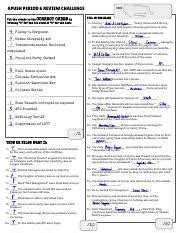The sixth period of American history (1877-1917) witnessed a whirlwind of transformation and turmoil that profoundly shaped the nation’s identity and trajectory. From the rise of industrial giants to the emergence of social movements and the expansion of an empire, this era was a crucible that forged the modern United States.

Industrialization and Economic Expansion
The Industrial Revolution hit the United States like a thunderbolt, propelling the nation towards unparalleled economic growth. Inventions such as the Bessemer process and the telephone revolutionized industries, while the growth of railroads and telegraphs connected the country like never before. By 1900, the United States had become the world’s leading industrial power.
Key Figures:
- Railroad mileage: Increased from 93,000 miles in 1877 to 250,000 miles in 1917
- Steel production: Rose from 385,000 tons in 1877 to 46 million tons in 1917
Social Transformation
The Industrial Revolution brought about profound social changes, creating new opportunities and challenges for Americans. Urban populations swelled as people flocked to cities for factory jobs, leading to overcrowding and social tension. Immigration surged, with millions of Europeans seeking a better life in America.
Key Figures:
- Urban population: Increased from 3.3 million in 1870 to 30.1 million in 1900
- Immigration: Over 25 million immigrants arrived between 1880 and 1920
Political and Social Movements
Social upheavals sparked political and social movements aimed at addressing the inequalities and injustices of the time. The Progressive Era (1890s-1920s) saw the rise of labor unions, women’s suffrage activists, and reformers fighting for social justice.
Key Movements:
- American Federation of Labor (AFL): Founded in 1886, became the largest labor union in the country
- Women’s Christian Temperance Union (WCTU): Led the campaign for prohibition and women’s suffrage
- Social Gospel Movement: Emphasized the application of Christian principles to social problems
Imperialism and Expansion
The late 19th century witnessed a surge in American imperialism, driven by a desire for economic expansion and national prestige. The United States acquired colonies in the Pacific (Hawaii, Guam) and the Caribbean (Puerto Rico, Cuba), while also intervening in Latin America.
Key Events:
- Spanish-American War (1898): Resulted in the acquisition of Puerto Rico, Guam, and the Philippines
- Roosevelt Corollary to the Monroe Doctrine (1904): Gave the United States the right to intervene in Latin America to prevent European influence
Foreign Policy and World War I
American foreign policy in the early 20th century focused on economic expansion and maintaining global stability. President Woodrow Wilson’s “New Freedom” agenda emphasized free trade and anti-trust legislation. The United States eventually entered World War I in 1917 after the sinking of the Lusitania.
Key Figures:
- Lusitania: British passenger ship sunk by a German submarine in 1915, killing 1,198 people
- Zimmerman Telegram: Intercepted German message proposing a military alliance with Mexico against the United States
Effective APUSH Period 6 Review Strategies
To effectively review for the APUSH Period 6 exam, consider the following strategies:
- Create Timelines: Construct timelines to track key events, economic developments, and social movements.
- Use Flashcards: Flashcards are an excellent tool for memorizing key terms, dates, and events.
- Practice Essay Writing: Write timed essays to improve your analytical skills and historical understanding.
- Engage in Discussion Groups: Discuss historical topics with peers to refine your interpretations and learn from others.
- Review Historical Documents: Analyze primary and secondary sources to gain a deeper understanding of the period.
Common Mistakes to Avoid
To avoid common mistakes on the APUSH Period 6 exam, be mindful of the following:
- Oversimplifying Industrialization: The Industrial Revolution was a complex process with multiple causes and consequences.
- Ignoring Social Movements: Social movements played a crucial role in shaping the era, so don’t neglect their importance.
- Downplaying Imperialism: American imperialism had significant consequences both domestically and internationally.
- Assuming Neutrality: The United States’ entry into World War I was a complex and controversial decision.
- Confusing Key Figures: Distinguish between key figures like Andrew Carnegie, J.P. Morgan, Theodore Roosevelt, and Woodrow Wilson.
Tables for APUSH Period 6
The following tables provide a concise overview of key events and figures:
Table 1: Industrial Revolution Inventions
| Invention | Year | Inventor | Impact |
|---|---|---|---|
| Bessemer Process | 1856 | Henry Bessemer | Reduced cost of steel production |
| Telephone | 1876 | Alexander Graham Bell | Connected people over long distances |
| Electric Light Bulb | 1879 | Thomas Edison | Illuminated cities and homes |
| Automobile | 1886 | Karl Benz | Revolutionized transportation |
Table 2: Social Transformation
| Event | Year | Significance |
|---|---|---|
| Great Migration | 1870s-1920s | Mass movement of African Americans from the rural South to the urban North |
| Ellis Island | 1892-1954 | Immigration station through which millions of European immigrants entered the United States |
| Jane Addams | 1889 | Founded Hull House, a social settlement in Chicago |
Table 3: Political and Social Movements
| Movement | Year | Goal |
|---|---|---|
| American Federation of Labor (AFL) | 1886 | Improve wages and working conditions for laborers |
| Women’s Christian Temperance Union (WCTU) | 1874 | Promote temperance and women’s suffrage |
| Social Gospel Movement | 1880s | Applied Christian principles to social problems |
Table 4: Imperialism and Expansion
| Event | Year | Significance |
|---|---|---|
| Spanish-American War | 1898 | Resulted in the acquisition of Puerto Rico, Guam, and the Philippines |
| Roosevelt Corollary to the Monroe Doctrine | 1904 | Gave the United States the right to intervene in Latin America |
| Panama Canal | 1914 | Connected the Atlantic and Pacific oceans, reducing shipping times |
